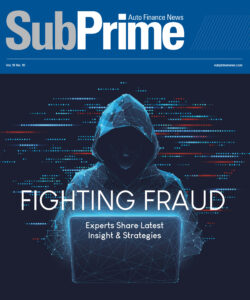Equifax: Auto Loan Figures Keep Rising
ATLANTA — According to Equifax's latest monthly National
Consumer Credit Trends Report, automotive credit balances and new accounts are
increasing steadily with the number of new accounts opened in the first half
approaching pre-recession levels.
Analysts believe auto lending is gaining strength,
reflecting increasing demand for new vehicles. Year-to-date through June,
Equifax tallied that total auto lending has reached $207 billion, a
13.7-percent increase above the volume during the same period a year earlier.
The firm noted sales of new cars and light trucks increased
nearly 15 percent during the first half of the year, dominated by sales of
smaller, more efficient and cheaper vehicles.
In terms of the number of auto loans originated during the
first half of the year, analysts computed that this year's auto lending at 10.7
million loans is the highest since 2007 when 11 million loans were opened.
Analysts went on to highlight delinquency and write-off
rates on auto loans and leases are well below levels seen at the start of the
recession.
In terms of dollars at risk, write-off rates in August are
one-third of what they were at the peak in March 2009 (2.1 percent versus 6.1
percent), while the number of auto account write-offs is about half of the peak
volume (2.5 percent versus 5.2 percent).
Equifax went on to point out write-off rates using both
dollars and units exceeded 4 percent at the start of the recession.
"The average age of cars on the road today in the U.S. is
the highest ever recorded, and consumers are ready to replace these older
vehicles," said Equifax chief economist Amy Crews Cutts.
"At the same time, the financial picture has improved
sufficiently that we are seeing auto lending markets become facilitators rather
than obstacles to meeting this demand, especially in the near-prime segment of
the market that had all but ceased to exist during the worst of the financial
crisis and recession," Crews Cutts added.
Other credit highlights from the most recent data include:
Bank Credit Card
—Nationally, bank credit card origination credit limits
year-to-date through June have increased more than 36 percent from their
recession low from $55.5 billion in 2010 to $87.3 billion in 2012.
—The total number of bank credit card accounts exceeded 300
million for the first time since April 2010, a 28-month high.
—While the amount of credit available (the difference
between credit used and credit limits) has been rising since February of last
year as utilization rates continued to fall until May of this year when they
hit a five-year low of 22.1 percent.
—Utilization rates rose to 22.4 percent, and the amount of
credit available was $1.87 trillion in August.
Retail Credit Card
—Nationally, retail credit card origination credit limits on
a year-to-date basis increased more than 15 percent from $25.8 billion in 2010
to $30.4 billion through June 2012.
—Retail credit card balances in August stood at more than
$51 billion — reflecting a 33-month high.
—Total retail credit card limits are at more than $340
billion through August — a 15-percent increase from May ($290 billion) and
the highest level in 27 months.
Student Loans
—Student loan new credit increased more than 15 percent from
$25.6 billion in 2010 to $30.3 billion through 2012 year-to-date through June.
—Overall balances of student loans have increased throughout
the recession and subsequent recovery, reaching more than $800 billion through
August.
—Student loan write-offs totaled $10.6 billion year-to-date
through August, an increase of more than 10 percent from same time a year ago
($9.5 billion in 2011).
—The average total of all student loans taken out by a
borrower in June ($9,467) is more than 67 percent higher than the recession low
in 2008 ($5,660).
—The average loan size per student loan is increasing at a
slower rate than overall student borrowing. The average single student loan in
June was $5,701 compared to $4,126 in June 2008 as students seek multiple loans
to cover their education costs.
Normal
0
false
false
false
EN-US
X-NONE
X-NONE
/* Style Definitions */
table.MsoNormalTable
{mso-style-name:”Table Normal”;
mso-tstyle-rowband-size:0;
mso-tstyle-colband-size:0;
mso-style-noshow:yes;
mso-style-priority:99;
mso-style-qformat:yes;
mso-style-parent:””;
mso-padding-alt:0in 5.4pt 0in 5.4pt;
mso-para-margin-top:0in;
mso-para-margin-right:0in;
mso-para-margin-bottom:10.0pt;
mso-para-margin-left:0in;
line-height:115%;
mso-pagination:widow-orphan;
font-size:11.0pt;
font-family:”Calibri”,”sans-serif”;
mso-ascii-font-family:Calibri;
mso-ascii-theme-font:minor-latin;
mso-fareast-font-family:”Times New Roman”;
mso-fareast-theme-font:minor-fareast;
mso-hansi-font-family:Calibri;
mso-hansi-theme-font:minor-latin;}

 View The Latest Edition
View The Latest Edition

